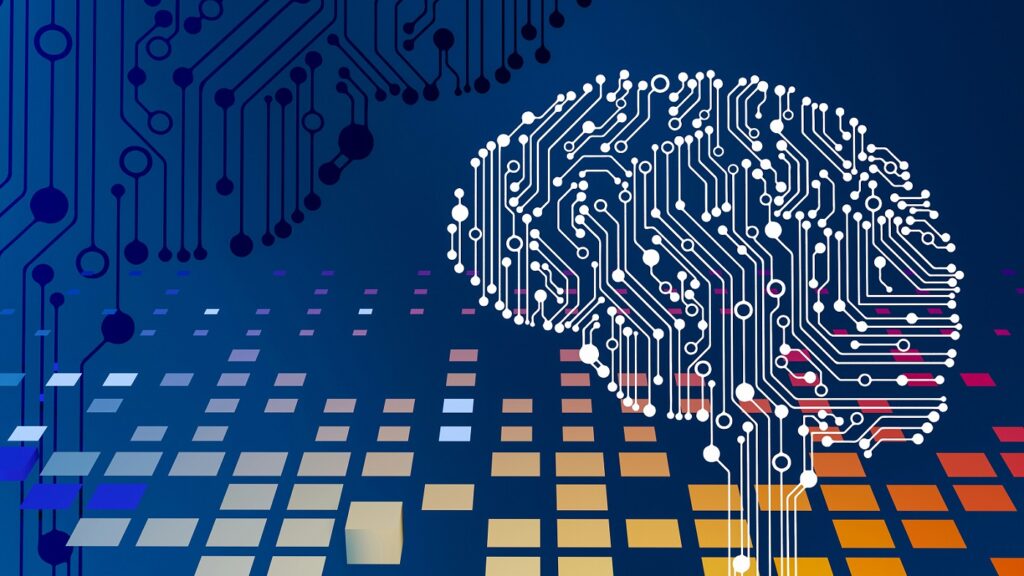Cybercriminals are evolving with their attacks on your organizational systems, and your cybersecurity measures need to reciprocate accordingly. With artificial intelligence (AI) in the game now, you are at the helm of improving and scaling the security proficiency of your business systems.
As hackers are leveraging the potential of technological advancements to infiltrate your business operations, why stay behind with traditional security tools or solutions? Introduce AI in cybersecurity and boost the efficiency of threat detection, response actions, and system defenses.
Artificial intelligence brings to the table the capacity of keeping out smart malware, realistic phishing emails, deepfakes, and other such threats. This article will help you learn more about how artificial intelligence in cybersecurity is changing in this decade, and what roles it can serve in the modern business world.
How AI is Changing Cybersecurity?
AI is simply an intelligent solution for you to defend your business data, networks, and systems from advanced cyber attacks. However, they are different and better than the traditional security systems your business currently runs on! It is because, unlike the traditional tools that run on predefined rules or criteria, AI has the ability to think of its own. Following that, Deep Learning and Natural Language Processing (NLP) are a couple of other technologies that AI in cybersecurity is dependent upon!
An AI model for cybersecurity also facilitates:
- Learning from different user accessibility patterns
- Detecting weird user behavior
- Responding proactively to potential threats before they turn problematic
- Learning from past cyberattacks and detecting recognizable patterns in the future
- Deep Learning is meant to handle layered & complex data for hard-to-detect threats.
- NLP helps the AI model process & understand any written content, such as chat logs or emails.
Examples:
To give you a perspective, suppose you are relying on a standard firewall to block all the malicious IPs on your business network, but the attack comes in with cloaked yet clean credentials, backed with polished language. In that case, your traditional firewall will fail to filter the IPs and will let them into your business network.
On the other hand, AI in cybersecurity measures will connect the dots by assessing strange login timing, suspicious data transfer, or unusual user behavior. For anything that feels off to the AI model, an alarm will be raised instantly.
To help you better understand, attackers in 2025 are now using AI to create flawless and personalized emails to trigger a phishing attack. There’s a chance that a cybercriminal can realistically mimic a CEO’s tone to fool an employee into giving in important company credentials. The standard security practices might not be able to detect AI cyber threats or phishing attempts!
You need an AI cybersecurity system to beat such malicious attempts by analyzing the email context, timing, and behavior.
Modern-Day Roles of AI in Cybersecurity
AI has extensive use cases as far as cybersecurity is concerned, but here is a clear elaboration of some of the most crucial yet recent roles of it:
1. Threat Detection & Intelligence:
Without AI, threat detection was mostly carried out through preset rules. It means, whenever any malicious attempt matched a known or predefined pattern, a flagging alert was raised. The problem with this approach today is, it misses out on the new or unfamiliar threats and also triggers false positives.
With the AI systems for cybersecurity in practice, any type of unusual activity, even if it is new and doesn’t align with any prior attack patterns, will be automatically detected and flagged. For instance, if your business system suddenly experiences a heavy flow of traffic from any foreign server, AI will flag it as suspicious.
In the long run, the AI models continue to learn from every suspicious instance they encounter and determine how threats can look or infiltrate a system. Thus, there won’t be many false alarms for your security team to take forward.
2. Phishing & Social Engineering Attack Prevention:
One of the most common ways attackers get into your business system is phishing. It is an approach where criminals trick your company employees into willingly giving out critical credentials or make them click on harmful links. Earlier, the traditional email filter tools used to catch most of such emails, but the phishing attempts have now grown more sophisticated.
Therefore, AI systems powered with NLP are used for analyzing the content, structure, and tone of messages or emails being sent across business networks. In this way, if any email or the domain it is being sent from seems suspicious, AI will detect & block the same before it reaches the user.
The AI model will continue to learn from users’ responses or behavior towards certain messages, which will reduce the rate of false positives. As people open, ignore, or report emails in the long run, the AI models will determine the parameters that define safe or unsafe messages.
3. Endpoint & Network Security:
In simple terms, endpoints resemble devices like servers, phones, or laptops. These are possibly the common entry points for cybercriminals. Even if one of these points is compromised, the entire business network can be affected adversely. AI will help protect both the network as well as endpoints.
The traditional security solutions are meant to scan only for the known threats, and artificial intelligence levels up the security with a predictive layer. With the use of AI in cybersecurity, you will be able to identify new types of malware, unusual device communications, odd file behaviors, and more.
You will be able to detect endpoints or network security threats even if you don’t have prior examples or patterns of them. For instance, if your AI security system detects some ransomware initiating its outreach from a device, it can automatically isolate the same from your business network instantly. Your security team will then be notified.
4. Insider Threat Detection & Behavioral Analytics:
Most devastating cyber attacks often come from within the organization, and that can be either intentional or accidental. Detecting such insider threats might be tricky, as some or most of the instances leading to an attack often look normal at the start. AI solves this issue by leveraging the potential of behavioral analytics.
Your AI cybersecurity model will be building a profile of what a typical acceptable behavior of every user looks like. This profile will include details on the type of files a user accesses or how they connect with the business systems. In case any user does something out of the ordinary, such as gaining access to some sensitive files at an odd hour, AI will flag it as an insider threat.
Due to this approach, your reliance on the static rules for detecting insider threats will be reduced, and you can make a more adaptive and personalized risk view strategy.
5. IAM (Identity & Access Management):
IAM is the process that ensures only authorized users get seamless access to your business resources. This system tends to manage people who have login authorities, the information they can see, and what permissions they hold. Moreover, you can also use this system to modify or revoke permissions in the long run.
Implementing AI to IAM will help your business system decide if an access request or login attempt is safe. The ML algorithm will analyze certain risk factors such as logging in from an unfamiliar device, requesting access to unauthorized systems, and more. If any potential accessibility behavior looks risky, the system will block the access.
6. Vulnerability Management
Cyber criminals are now more intelligent than ever, leveraging more sophisticated techniques or methods to infiltrate your business systems. Every year, there are thousands of new vulnerabilities being discovered & reported, and traditional cybersecurity measures might lead you to struggle in managing them all in real-time.
Therefore, implementing AI-powered security measures will help you detect existing or new vulnerabilities that might affect your business systems. Anomalous behavior of users, unusual activity on critical systems, data breach, and others.
Conclusion
So, this is a brief overview of different threats, traditional defenses, and AI roles in cybersecurity, necessary for your business system. As the cyber threats are now evolving with strong reliance on technology, it is time your business network & system upgrade its cybersecurity potential with something similar and beyond!
Artificial intelligence in cybersecurity is no more optional, but is a necessary implementation for you to secure your business operations from common and exclusive threats. Backed with machine learning, NLP, and other such technological concepts, AI has the power to identify, assess, and mitigate threats before they can escalate to become a serious problem.
From preventing data breaches and phishing attempts to detecting insider threats and endpoint compromises, AI can help you scale the efficiency of your cybersecurity practices.



